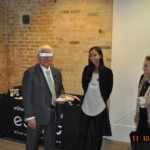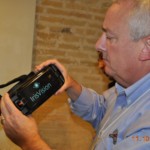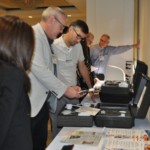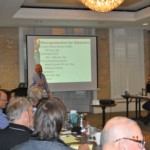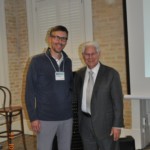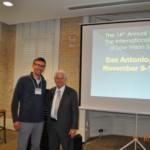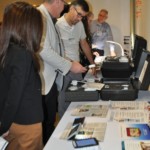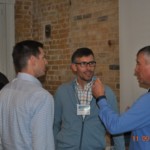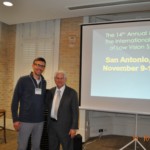Due to eye complications from juvenile rheumatoid arthritis, Sophie needed cataract surgery but was unable to have implants. The condition on not having a natural lens is called aphakia and it requires a patient to have strong glasses or contact lenses. Take a look at Sophie’s reaction to receiving new glasses with high-tech, super-modular lenses and her reaction to having comfortable soft contact lenses.
Tag: eye doctor
New Product to Help People with Stroke or Brain Related Injuries
What are Side Vision Awareness Glasses (SVAG)?
Side Vision Awareness Glasses® (SVAG) were developed by Dr. Errol Rummel of Jackson, NJ, after years of treating people with stroke-related,or brain injury related hemianopsia (side vision loss).
Hemianopsia (loss of half the width of your field of vision) is one of the most common side effects of a stroke or traumatic brain injury. People can find themselves afraid to go out, disoriented, and struggling to make it through their day.

Benefits of Side Vision Awareness Glasses (SVAG)
1. A wide viewing area, allowing better field awareness. And because SVAG have a vertical edge, a patient just needs to move their eyes a couple of millimeters to get into the SVAG area of the lens.
2. Cosmetically more attractive because the front of the lens is smooth, making the area with prism barely noticeable.
3. A higher index of refraction, so SVAG is a thinner, lighter, and more comfortable than other types of hemianopsia glasses.
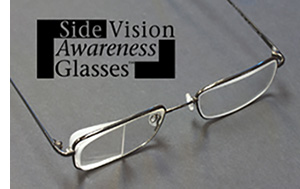
New Design Exclusive to Midwest Low Vision
Typically, these glasses have a prism on the back of the lens so that someone can use it when they need to by shifting their eyes to the left or the right. However, Dr. Rummel generously gifted Dr. Jarrod Long a set of his brand new full-field side vision awareness glasses. The work similarly to the standard SVAG but the entire lens is specially designed to shift the missing part of your vision into view. This expands a person’s awareness of objects in their path and enhances peripheral vision. Currently, Midwest Low Vision is one of the only practices in the Midwest with the full field SVAG.
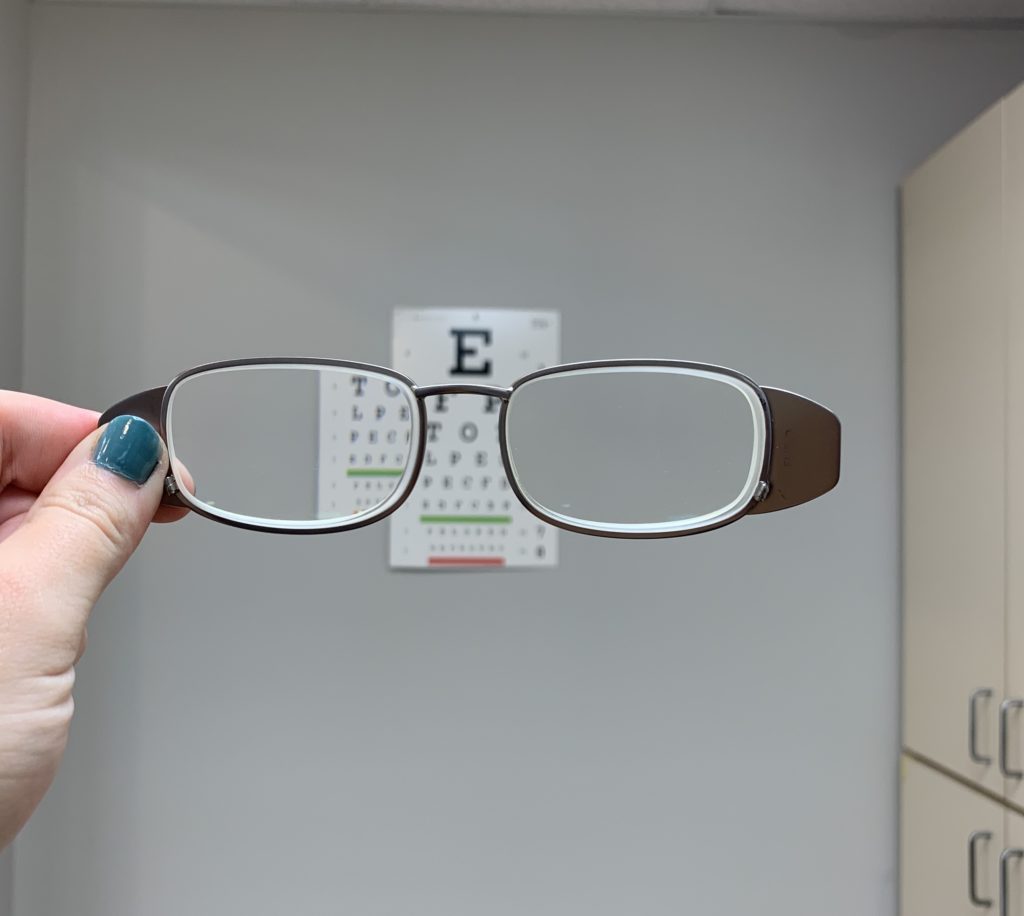
This is a pair of the new full-field glasses. Notice how there is no extra attachment on either lens- instead, the entire lens is designed to adjust the field of view. You can see how the lens shifts the image of the eye chart to the left. This specific type of lens is ideal for someone missing their right visual field. The new design allows someone to see more of their side vision without compromising the view right in front of them.
Dr. Long is specially trained to prescribe and dispense the right pair of glasses for you or your loved ones. If this sounds like something that would improve your quality of life, please call for more information!
Dear Eye Care (or other) Provider,
Do you know or have you ever seen, a friend, patient, client, loved one or other who is unable to see to do something they want to be able to do? Take a look here at my article written for Optometric Management that explains when to make the referral. You could change YOUR patient’s life…and I WILL refer them back to you for the specialized care that you provide.
Here’s what Dwain had to say: “In dealing with the loss of most of my vision, I never thought I would ever be able to attend live sporting events again. With the help of Dr. Long and his great staff (Casey especially) I was able to enjoy one of my favorite pastimes.”
Happy Valentine’s Day from Midwest Low Vision!

Age, weather, level of vision, and other things to be mindful of…
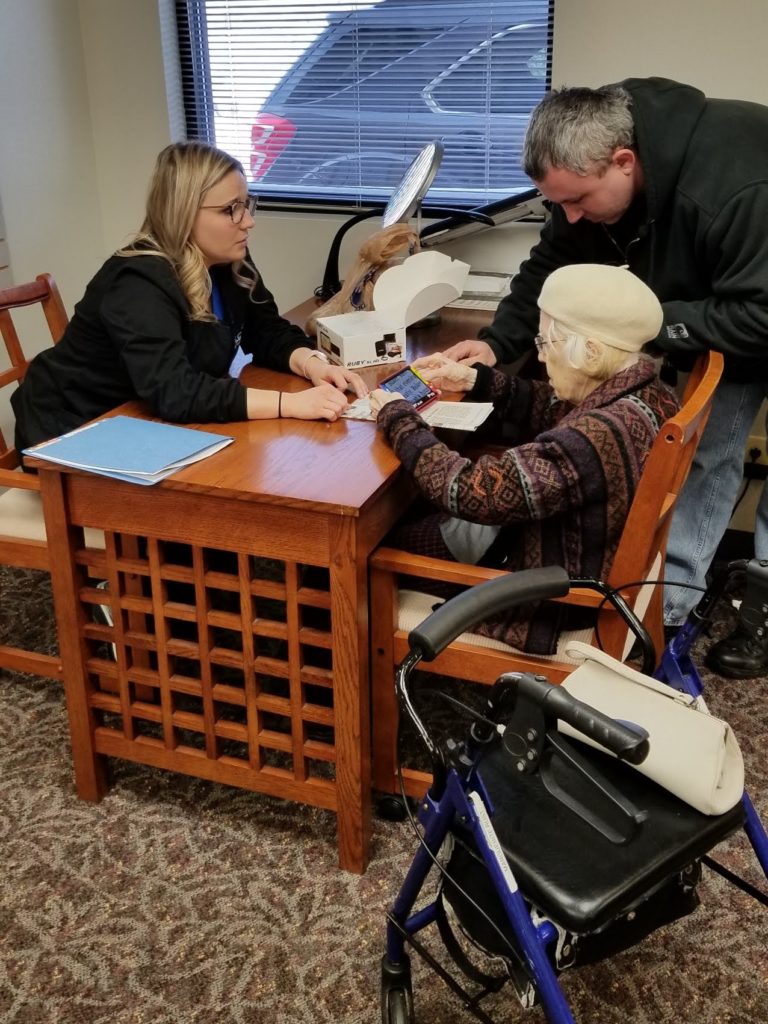
It’s -9 degrees Fahrenheit (never mind the wind chill) and my sweet 107 year old patient had no problem beating me to the office this morning for low vision care
Often times when I speak with with family and caregivers of my potential patients I hear things like “but mom is 83 years old”. Or, “dad won’t want to make a trip that far to see you”. They often say “her vision is really, really poor,” or “he can’t spend that money,” or “[fill in the box].”
One of my roles as a low vision specialist is to see through all of that. I approach each case without bias or discrimination to get down to what really matters. My goal is to help my patients, or potential patients, understand that there is hope and possibility. No matter the circumstances, there may be a way that they can see to do what they want to be able to do!
I have patients of all ages from around the world. Some have levels of vision from 20/20 while others are well-beyond the “big E” on the eye chart. Simple magnifiers and special, custom tints can make big differences. So can more complex solutions like telescopic glasses with focusing caps or video/electronic devices.
Simply make the call to our office. I will talk with you directly to get specific, helpful information and see if it makes sense to schedule an appointment. It almost always does! We will go over important details such as costs, location, and what to bring to the appointment.
I look forward to hearing from you.
Thank you, Dr. Long.
National Low Vision Meeting Summary
As one of the earliest members of the IALVS, Dr. Long attended his 7th annual meeting recently. Click here for a summary of speakers, topics, vendors, and other happenings at this exciting meeting!
What is different about a low vision exam?
In this video Dr. Long explains what you can expect during a low vision evaluation and what makes it different from other eye health examinations. As you’ll see, the key difference is eye health versus functional vision.
During the low vision exam Dr. Long will help you formulate your “wish list” so there are specific goals to be addressed during the approximately hour-long appointment.
Take a look at this short video to learn more about what to expect and just why you might need more than one eye doctor!
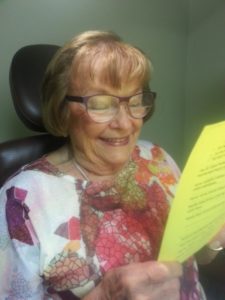
Meet Mary!
Mary has “rod achromatopsia.” This is a condition you are born with characterized by a partial or total absence of color vision. It also involves other problems with vision, like increased sensitivity to light and glare, involuntary back-and-forth eye movements (nystagmus), and significantly reduced sharpness of vision.
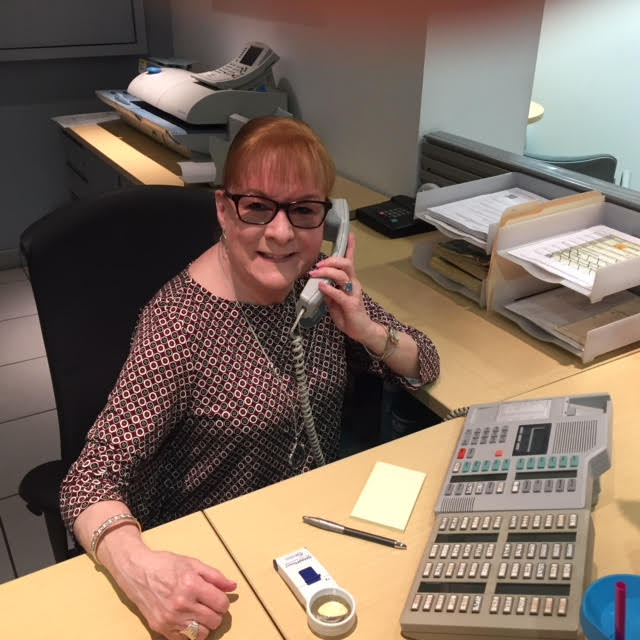
Mary was sent to Dr. Long through Indiana Vocational Rehabilitation Services to meet some vision-related goals. After a thorough low vision evaluation, Dr. Long prescribed several low vision aids. Mary uses bioptic telescopic glasses, prismatic reading glasses, a “Ruby” electronic magnifier, and specially-tinted regular glasses and sunglasses. All of these devices help Mary work, read, and participate in her favorite activities.
Mary had this to say about her experience with Midwest Low Vision:
“My association with the low vision department at Long Family Eye Care has always been a positive and helpful experience. My most recent visits introduced me to visual aids and glasses that enable me to function at the highest level possible with my visual impairment. The extra time Dr. Jarrod Long and Casey spent with me was informative, kind, and life-changing. Without question, the most current information and low vision assistance available.”
Thanks Mary!
If you or a loved one could benefit from our services, like Mary, please contact us today for a free phone consultation.
New Office Location for Midwest Low Vision in New Albany area!
Thank you to Dr. Braaten for 12 good years of allowing Dr. Long to care for low vision patients in your New Albany office!
Now, since Dr. Braaten recently closed his practice, Midwest Low Vision has had to find a new home. We are using the local vocational rehabilitation office at 1452 Vaxter Avenue in Clarksville, Indiana. Click here for a link to a map of the location. For those of you who have been waiting, we’ll see you soon!
Finally, we want to send out a special “thank you” to the staff and counselors at the rehabilitation services office for allowing us to use their office for low vision evaluations for anyone in need of help.
What is Low Vision?
In this video I define, in my own terms, what it means to have low vision. Low vision is a functional vision deficit. So, regardless of the measurement of your visual acuity (e.g. 20/60, 20/200, etc.) and any label (e.g. partially-sighted, legally blind) that has been placed on you, you have “low vision” if you cannot see to do what you would like to be able to do. Said another way, it’s vision that is insufficient to do what you want to do.
Thanks for watching !
Dr. W. Jarrod Long
Meet Jacob! Albinism and Low Vision.
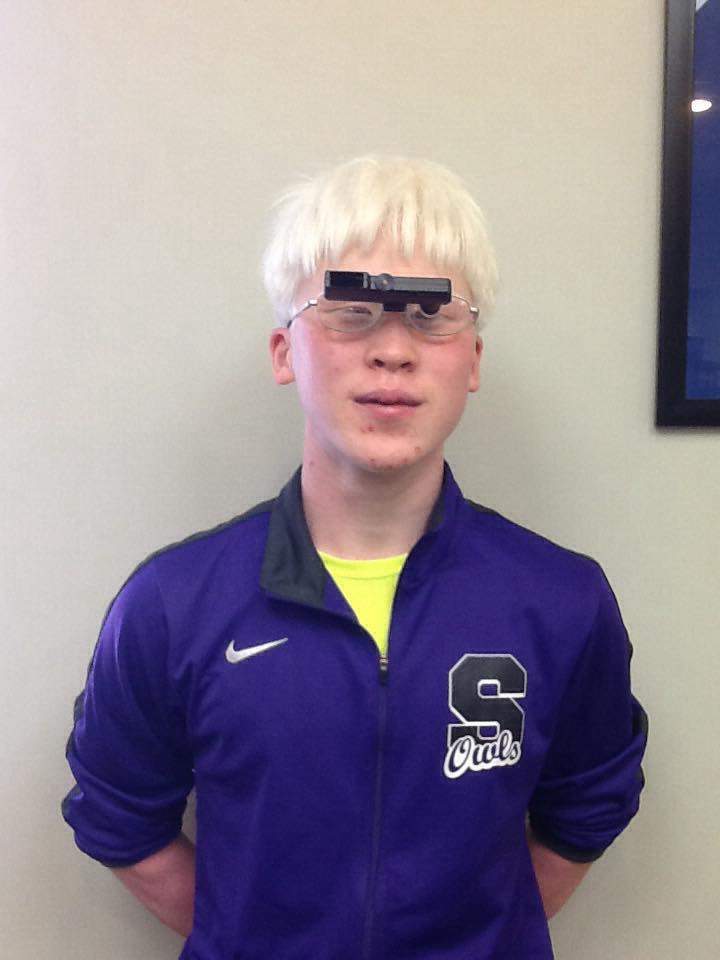
Indiana Vocational Rehabilitation Services referred Jacob to Midwest Low Vision. Jacob is a high school senior with oculocutaneous Albinism and associated Amblyopia (more commonly known as a “lazy eye”). Oculocutaneous albinism and ocular albinism are genetic conditions causing the central retina, or macula, to underdevelop.
Like others born with albinism, Jacob adapted to his level of vision. However, Dr. Long worked with Jacob to figure out how to make visual tasks a little easier. Dr. Long prescribed a 4x magnifying Bioptic telescope for Jacob to use for distance details such as driving, seeing faces, or seeing the board at school. He proudly wears his bioptic glasses in the image to the left. In addition, Dr. Long prescribed a handheld electronic magnifier along with a dome magnifier to help him with reading and schoolwork. Jacob sits with these devices in the image below.
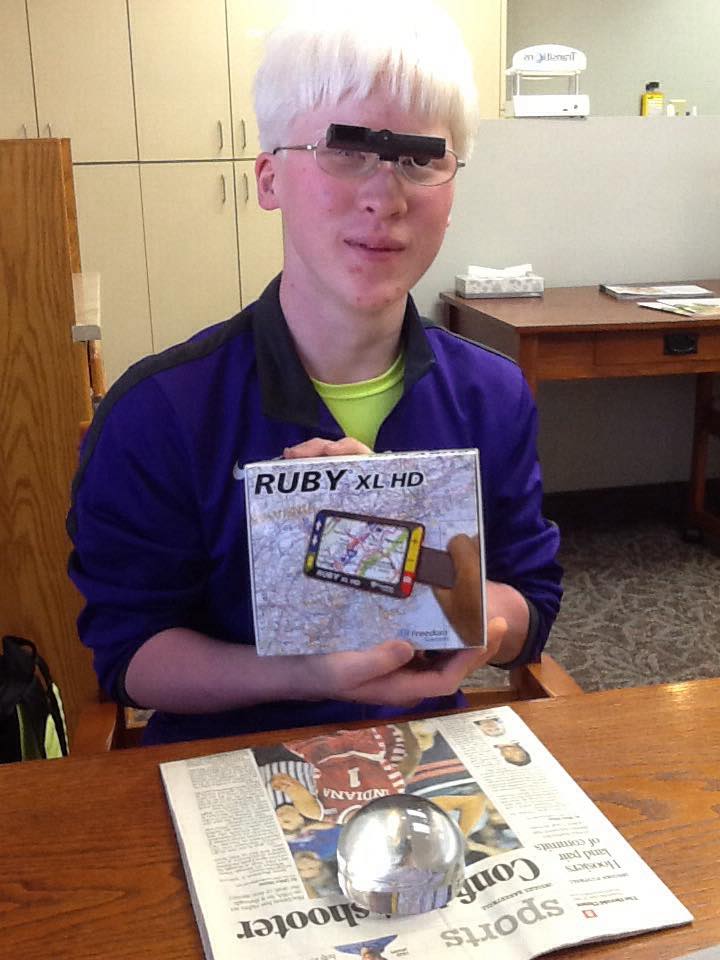
Jacob plans to go to college to be a music teacher. He feels like his “new technology will help [him] through life”. Above all, he believes his devices will give him the ability to impact others in positive ways.
Since his initial appointment, Jacob has learned to use his tools in the most effective ways. Currently, Jacob is on his way to get specialized training to drive with bioptics!
Dr. Long has helped hundreds of patients with various forms of albinism to see better with specialized low vision care.

